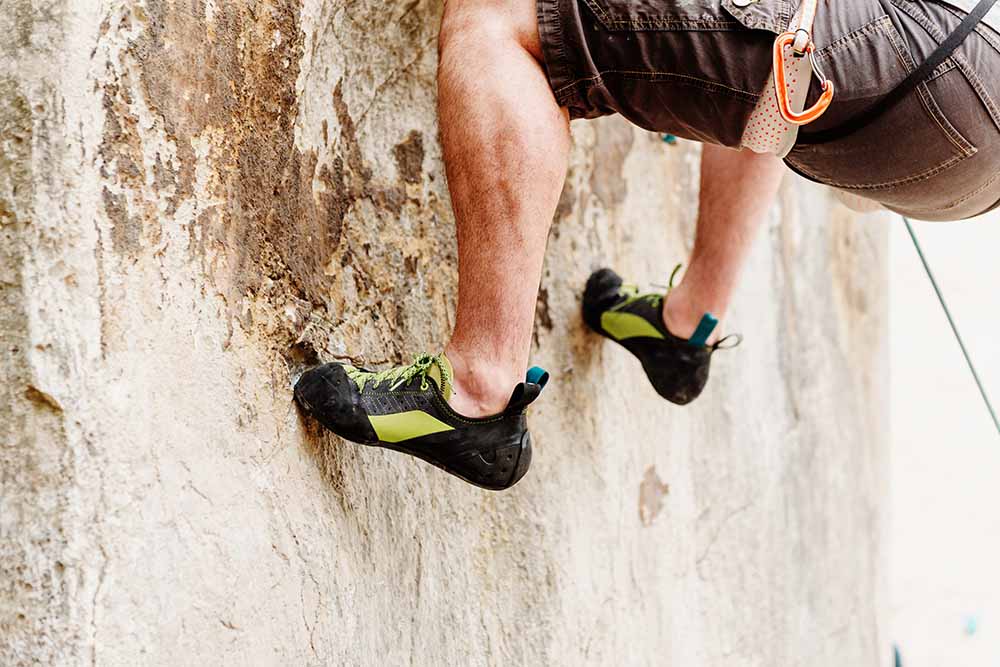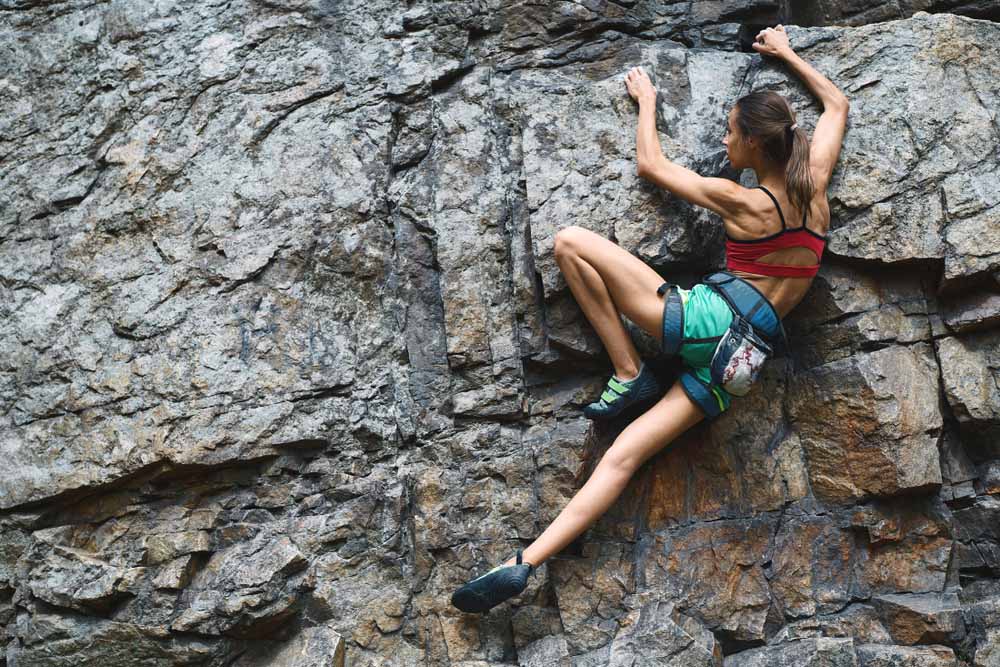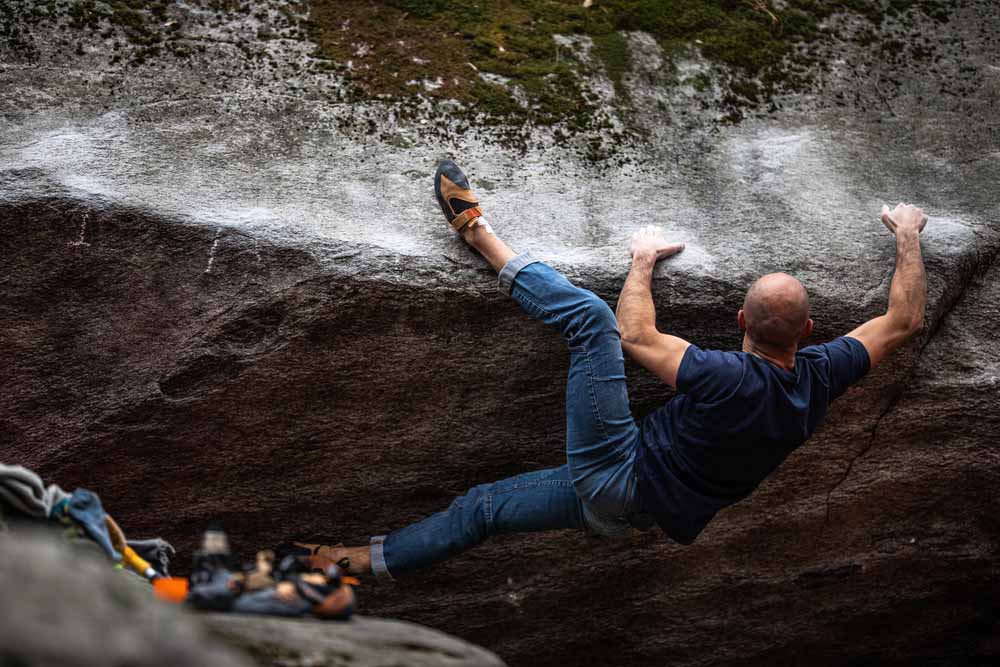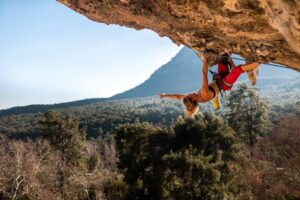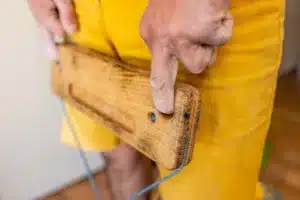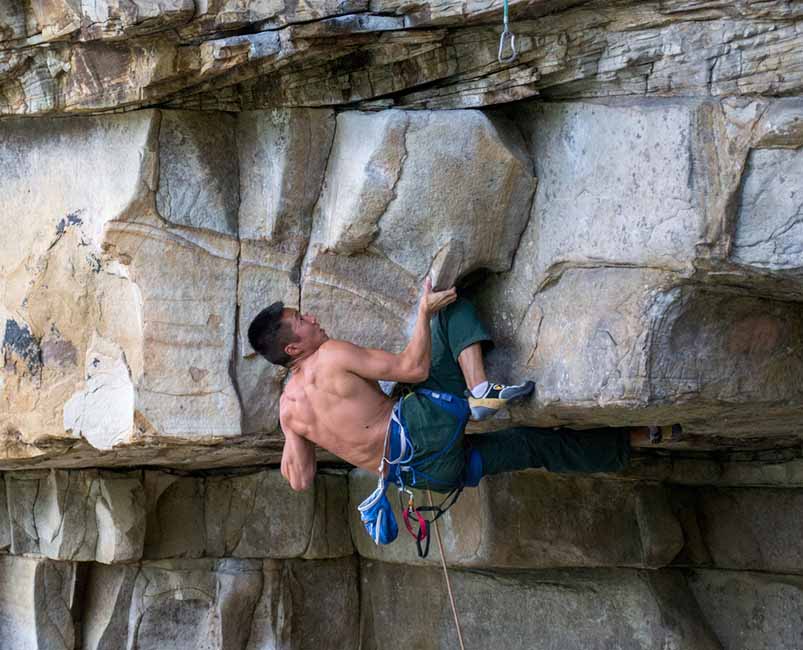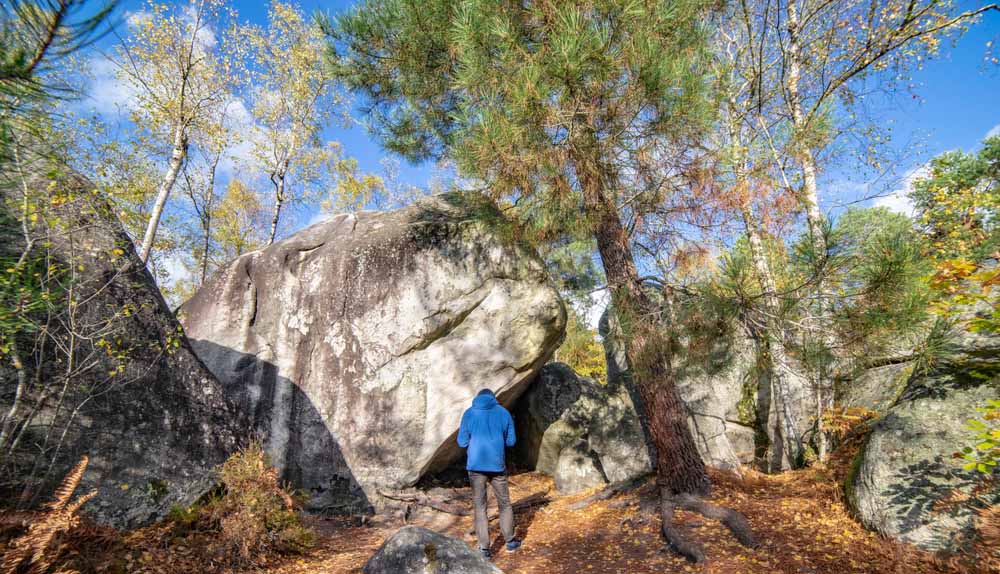The buffest guy or gal at the gym is oftentimes not the best climber. But why is that?
It’s because, contrary to popular belief, rock climbing is not all about strength. Yes, being strong is helpful. But your strength can only get you so far. At a certain point, you will need to employ technical climbing techniques, combined with strength, to climb boulders and routes successfully.
Keep reading if you are new to climbing or feel your progress has plateaued. Below I will share seven critical climbing techniques that you can employ to help improve your climbing.
Classic Climbing Technique
Climbing a route or boulder problem requires an intricate sequence of movements and separate applications of individual techniques. So, the more you know about the techniques that rock climbing requires, the quicker you will learn and the faster you will improve.
Edging
Edging is the basis of all footwork while you rock climb– it’s one of the fundamental tools. That’s because many footholds are small edges. Edging is the primary technique you employ on vertical face climbs with tiny holds, like most of the routes in Smith Rock.
Edging is a climbing technique where you place the edge of your climbing shoe onto a foothold to step up.
The most common type of edging is inside-edging– when you direct your foot placement with the big toe of your foot. Inside edging is the primary and most natural way to place your feet on small footholds.
However, you can also edge with the outside of your climbing shoe. Outside edging is super helpful when you are backstepping or doing a step-through during a traversing sequence of movements.
Smearing
Smearing is placing the outsole of your climbing shoe directly onto the rock to step upwards. This technique relies on the friction between the rubber on your climbing shoes and the stone to give you traction.
Using the smear technique is critical on low-angle and slabby rock. That’s because the less-than-vertical angle of the rock is intuitive for stranding on. For example, I think of granitic and low-angle slab climbs in Joshua Tree or Lumpy Ridge.
In addition, smearing is also possible on steeper, more vertical terrain. However, smearing on steeper terrain is more advanced and requires more pressure on your toes.
Mantling
Pulling down is the primary movement in rock climbing. However, sometimes, pulling down doesn’t do the trick. In these moments, you may need to push instead of pull.
In rock climbing, mantling is the technique you use to transition from pulling to pushing. This is very common in bouldering when you reach the lip of the boulder and must transition to pushing down to top out successfully.
The perfect example of the mantling technique is when you exit a pool without the ladder– you pull your body out of the water and then transition to pushing as you bring up a foot on the pool’s edge to help you stand up.
Flagging
When you start rock climbing, the primary focus regarding footwork is always keeping both feet on the wall. However, as you progress, you’ll notice that having both feet on the wall isn’t always necessary.
Flagging is when you use one of your legs (the one not standing on a foothold) to counterbalance your body weight and maintain control. To understand this concept, think of a monkey– as a monkey climbs, it waivers its tail back and forth to remain balanced.
You can do the same thing with your legs as you climb the wall.
Side Flag
A side flag is when you position one of your legs out to the side of your body to remain balanced. A common scenario where you might employ a side flagging technique is when your left hand and right foot are positioned in a straight line above and below one another. To counterbalance your body weight, you can flag your left leg out to the left.
Back Flag
A back flag is when you swing your flagging leg behind the other. Back flags are common when you have good holds on one side of your body. For example, when your left hand and foot have good holds, but the next move is up and right.
For better balance and to move your body closer to the wall, you can flag your right leg behind your left and reach up right-handed to the next hold.
Inside Flag
Inside flagging is similar to back flagging. Inside flagging is when your flagging leg crosses in front of the standing leg, between your body and the wall.
However, this movement is slightly less intuitive. Therefore, most climbers perform a side flag instead of inside flagging. For example, instead of inside flagging the right leg in front of the left to remain balanced, most climbers would swap feet, making the right leg the standing leg and flagging the left out to the side.
Drop Knee
As the terrain gets steep, handholds get further apart, and movements get larger, you may run into the problem of not being able to reach the next hold.
When this happens, one solution is to generate more momentum and push more through your legs to reach the next hold dynamically.
However, dynamic climbing may not always be the best solution. Sometimes employing the drop knee technique will be more efficient and successful instead of hucking to the next hold.
A drop knee is when you place your toe on a foothold and then drop the knee on the same side inward and downward to rotate your hip sideways. Drop kneeing helps bring your hips closer to the wall, which helps keep your weight above your footholds and moves the rest of your body closer to the wall, effectively shortening the distance between you and the next hold.
Heel and Toe Hooking
So far, I’ve only talked about how to use the front of your climbing shoes for edging and smearing. However, modern climbing shoes are much more versatile than that. You can employ other parts of the shoe, like the heel cup, to gain a grip.
Heel hooking is when you place the heel of your foot onto a hold to pull your body inwards. Heel hooking helps create body tension when the direction of the footholds makes it impossible to edge.
Toe hooking is another superfly hooking technique for rock climbing. Toe hooking is when you use the extra rubber on the tops of your climbing shoes to hook footholds and pull your body closer to the wall.
Heel and toe hooking is particularly helpful in steep and overhung terrain. For example, many of the most technical rock climbs in places like the Red River Gorge require you to place heel and toe hooks.
Kneebarring
A kneebar is when you wedge your leg between two points of contact on the rock to gain stability– normally, your toe and your thigh (just above the kneecap).
Like heel and toe hooks, kneebars are most common in steep overhanging terrain, mainly when 3D features, like large huecos, stalactites, and tufas, for example, in the steep limestone caves of Kalymnos, Greece, and Rifle Mountain Park characterize the climbing.
A good kneebar drastically reduces the energy your fingers and arms are expending. That’s because an effective kneebar transfers the load-bearing responsibilities from your arms to your much stronger legs, so kneebars are commonly used for resting mid-route.
Tips To Improve Climbing Technique
One of my favorite things about rock climbing is that there is always something to improve. The endless search for improvements and mastery of new techniques keeps climbing infinitely interesting.
So if you are on a journey to improve your climbing technique, try some of the tips below. You can also checkout our beginner bouldering tips post for more!
Practice Downclimbing
As rock climbers, we spend the majority of our time climbing up. When we reach the tops of routes, we get lowered, or we top out when we send a boulder. That means we hardly ever downclimb– which is descending the route in a similar fashion to how you went up.
Downclimbing is a super helpful skill. Reversing the movements you completed to go up is a great way to build endurance because you climb everything twice.
But downclimbing also teaches you a lot about the building blocks of specific movements, and if you can perform the movement backward, you are bound to improve your climbing technique.
Climb with Silent Footwork
The foundation of rock climbing is footwork. Without proper footwork, you will expend too much energy and get fatigued faster than you should. That’s why when guiding clients, I coach them to think “feet first.”
A fun and effective way to improve your footwork technique is to challenge yourself to climb silently. In other words, try to make zero noise with your feet as you climb up a route or boulder problem.
By climbing silently, you’ll notice two things.
- Your climbing slows down, which is helpful for not rushing your foot placements.
- You become more intentional about where and how you place your toes, where you smear, and how you heel hook.
Take a Technique Class
Historically, climbing was passed on to the new generation of climbers from more experienced mentors. Mentees would follow around more experienced mentors, absorbing as much information as possible to one day competently climb independently.
Nowadays, things are a little different. Fewer people are interested in forming mentoring relationships with more experienced climbers. However, it’s one of the best ways to learn!
So the next time you see a technique class offered at your local gym, sign up! You may benefit from the guidance of a more technically-sound climber.
Climb with New (Stronger) Friends
Humans have an innate ability to imitate the behaviors of others. That’s why the game “monkey sees, monkey do” is so popular amongst children– because it’s a super effective way to learn new behaviors and skills.
During rock climbing, you can lean on your innate ability to imitate others to improve your climbing. Observing other climbers who are stronger and more skilled is one of the best ways to improve your technique.
So don’t be shy to stare at others while climbing– just do so politely.
Go Bouldering
When I first started climbing, all I was doing was indoor bouldering. At the time, I remember feeling like I wanted to “graduate” from bouldering and climb taller routes on a rope. But now I realize that starting with bouldering was critical for my climbing technique.
That’s because bouldering allows you to get many repetitions in a limited time. As a result, you can easily train specific climbing techniques in a short amount of time and with little commitment.
It’s no wonder that bouldering was first developed as a training exercise for climbers wanting to build strength and improve their technique for the larger climbing objectives they had in the mountains.
Drop Your Heels When Smearing
Smearing is one of the most crucial climbing techniques. Regardless of where you are climbing, you will have to smear on the rock at some point, relying on nothing but friction between your climbing shoes and the stone.
One way to improve your smearing is to select the correct shoe and rubber compound—typically the softer, the better.
However, another way to improve your smearing is to focus on dropping your heels after you place the smear. Dropping your heel helps engage more outsole rubber, creating a larger surface area between the rubber and the rock.
Final Thoughts- Get Stronger, But Don’t Forget Technique
Being physically stronger in climbing will always be helpful. However, building your strength will not improve your climbing as much as improving your climbing technique.
So do more pull-ups, train on the campus board, and work out your abs, but never forget to train your technique. So, take some of the techniques I talked about in this article and apply them while you train in the gym.
Then, when it’s time to move outside, you’ll notice you can send your projects exponentially faster.
Have fun out there, be safe, and always do your double-checks.



